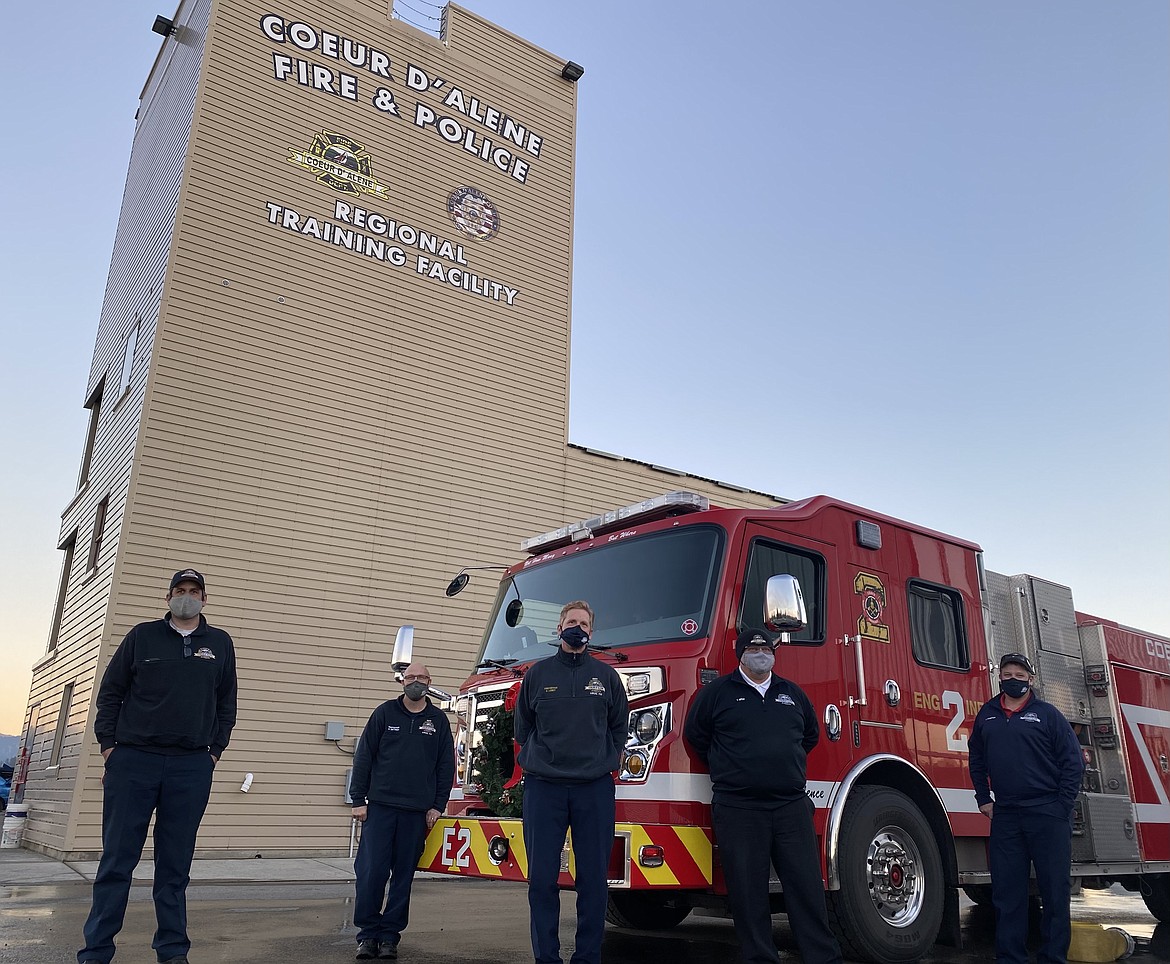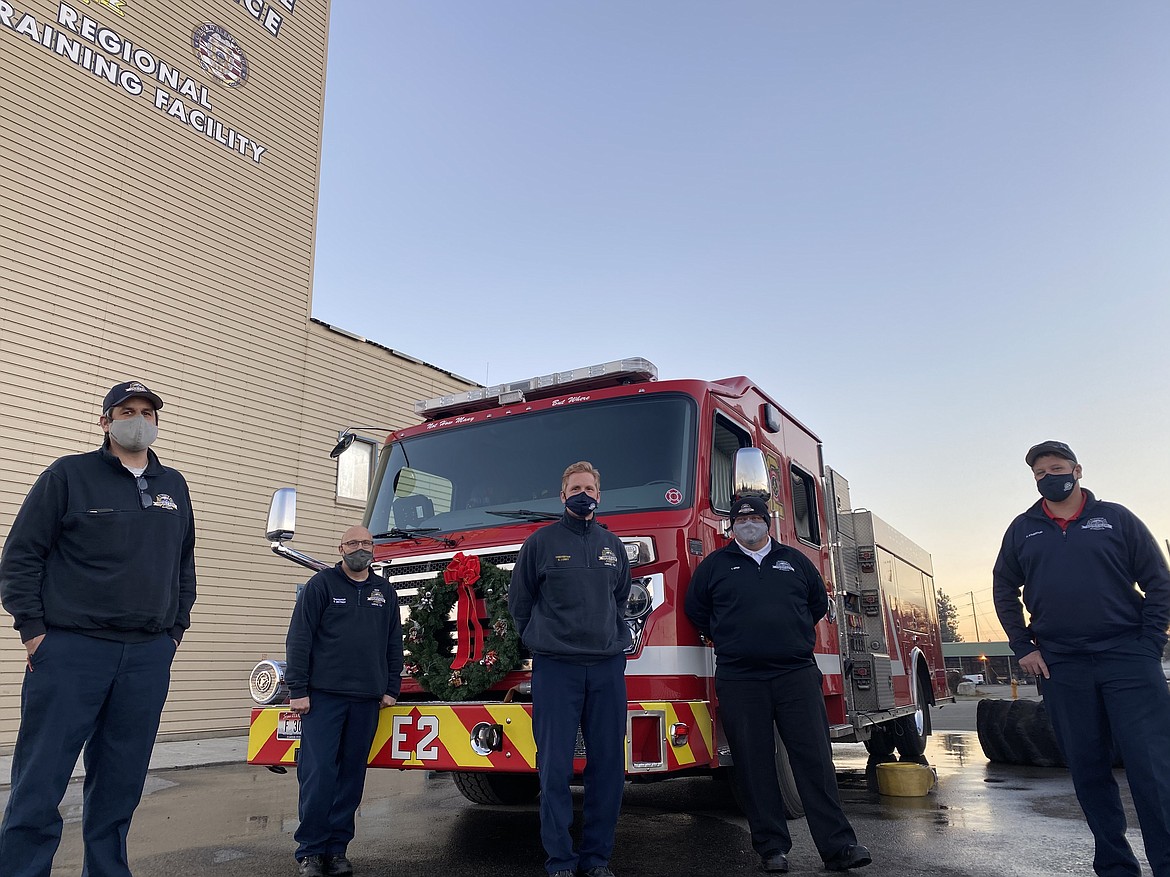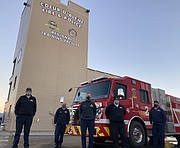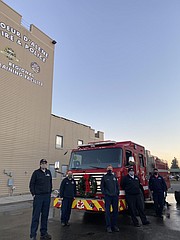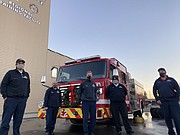They're virus fighters, too
When Scott Dietrich goes home after working 48 straight hours, he sleeps alone, uses a separate bathroom, and maintains at least 6 feet from his wife and daughter.
Dietrich is a firefighter and paramedic for the Coeur d'Alene Fire Department. He and more than 50 other CDAFD staff have spent the last eight months taking every precaution to protect themselves, their team, and their community from viral contamination.
CDAFD receives between 9,000 and 10,000 calls for assistance annually, 88% of which are for emergency medical services. Firefighters and paramedics like Dietrich and Eric Loney typically work on a 48/96 schedule — two days on, four days off, but that has been subject to change since March as any person who potentially comes in contact with a COVID-19 patient is sent home for isolation and testing.
"We cannot fail. We have to keep these fire engines on the road," CDAFD Deputy Chief Tom Greif said. "It's challenging for all these guys because they are all working multiple days on their days off, and some of them are here for four to five days straight, not just two."
The CDAFD has racked up about $250,000 in overtime pay and about $120,000 in decontamination and personal protective equipment expenses.
Responding to a call now comes with additional steps, putting on gloves, gowns, masks, eye protection, and face shields. However, because of the limitations and shortages of personal protective gear, first responders have become more cautious with their equipment usage.
"We were at a very low level in May because we were throwing PPE on for every call and for everyone going inside," Greif said. "We had to take a timeout because we couldn't afford to do it. We would've never made it a month at that rate."
How they triage, care is also different.
To preserve PPE and reduce the risk of infection, one first responder will don the protective garb, assess the scene and the patient before asking for assistance. This changes for certain emergency services, of course, as some like cardiac arrest techniques may require multiple personnel.
"We've been careful to try and conserve so when we show up on a call, one guy will get in the gown, go into the house, triage, stay 6 feet away and make sure the patient is wearing a mask," Loney said. "If he needs help, we'll send in a second guy to make sure we're not blowing our PPE because it can happen, especially if we get a CPR call and nine people are going in to help."
Greif said the department had to look for alternatives like buying material or disposable zip-up hunting suits to wear in place of gowns. Not only did CDAFD have to worry about themselves, but the other departments supporting Kootenai County, as well. To ensure no resident or personnel was left unsafe, Greif said regional departments formed a multiagency coordinating group to conserve equipment and become more methodical in their care.
As first responders, when the 19 men and women are on duty, they sleep, eat, and live together at the fire station. The only time masks come off is when they're entirely alone. Life at the station is different as well. No more family-style dinners, rooms that previously housed two now only hold one, and staying 6 feet apart is a constant measure.
"You are in your mask the entire shift as long as you're out in a room or on an apparatus going to a call with any co-workers," Dietrich said. "Depending on how busy it is, we can easily go 10 to 15 hours of a 24-hour shift in a mask."
After eight long months of rolling with the punches, it's taken a toll on these front line workers. There is a constant fear of infection — whether from patients, families, or the first responders themselves.
Recently, CDAFD battalion chief John Morrison said two firefighters in Kansas City died after contracting the virus on duty.
"The risk for us is that we're not going to catch it and take it home to our families from the person who has the fever or the cough that is positive," Loney said. "It's going to be the fender bender on U.S. 95 or the kid on the playground that twisted his ankle. It'll be the ones we don't expect."
Earlier this year, there was a potential positive within the department, Greif said, which caused an entire station to be sent home for isolation. There is no extra crew for the Coeur d'Alene Fire Department, so when one person is sent home, another is brought in on their day off to work overtime.
"We don't have a choice. We have to be here," Greif said.
Morrison said what gets these first responders through mental and physical fatigue is their drive to aid and serve the community.
"The higher calling of what we do and the pride that we take in it, I think, keeps the guys engaged at work and keeps our wheels turning to be able to provide this service," he said. "Knowing what we do for the community and them letting us know that they appreciate us is tremendous."


